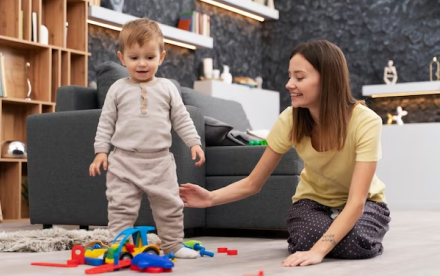Bringing the principles of Montessori education into your home environment can transform everyday spaces into vibrant hubs of learning and discovery for your children. By encouraging independence, curiosity, and creativity, you can create a nurturing atmosphere that supports your child's development in profound ways. Let's explore practical tips and ideas for creating a Montessori-inspired learning environment at home.
- Designate Learning Areas
Begin by designating specific areas in your home for learning and exploration. Create a cozy reading nook with floor cushions and a bookshelf filled with age-appropriate books. Dedicate a corner for art activities, equipped with a low table, art supplies, and a display area for showcasing your child's masterpieces. Establish a quiet space for concentration and reflection, free from distractions and clutter.
- Arrange Furniture and Materials Thoughtfully
Arrange furniture and materials in a way that promotes independence and accessibility for your child. Keep frequently used items within reach on low shelves or baskets, allowing children to select and return materials independently. Arrange furniture to encourage movement and flow, with open spaces for exploration and activities. Use child-sized tables and chairs to promote comfort and autonomy during learning activities.
- Incorporate Montessori-Inspired Activities
Integrate Montessori-inspired activities into your daily routines to stimulate your child's curiosity and learning. Provide opportunities for practical life activities such as pouring, scooping, and sorting in the kitchen. Set up a nature-inspired sensory bin filled with natural materials like sand, rocks, and pinecones for tactile exploration. Encourage gross motor development with indoor climbing structures or obstacle courses.
- Select and Use Montessori Materials Effectively
Choose Montessori materials that align with your child's interests and developmental stage. Invest in quality materials that are durable, safe, and engaging for hands-on exploration. Rotate materials regularly to maintain interest and challenge your child's skills. Focus on materials that promote open-ended play and allow for multiple uses and interpretations.
- Foster Independence and Self-Regulation
Empower your child to take ownership of their learning and daily routines by fostering independence and self-regulation. Encourage children to participate in household tasks such as setting the table, folding laundry, or watering plants. Provide opportunities for decision-making and problem-solving, allowing children to learn from their experiences and mistakes.
- Create a Calm and Inviting Atmosphere
Design a calm and inviting atmosphere that nurtures creativity and concentration. Use soft lighting, natural materials, and soothing colors to create a peaceful environment conducive to learning. Minimize visual and auditory distractions to promote focus and attention during learning activities. Incorporate elements of nature such as plants, shells, or stones to bring the outdoors inside and inspire a sense of wonder.
By implementing these practical tips and ideas, you can create a Montessori-inspired learning environment that fosters your child's natural curiosity, creativity, and love of learning. Embrace the principles of Montessori education in your home to empower your child to thrive and reach their full potential.

